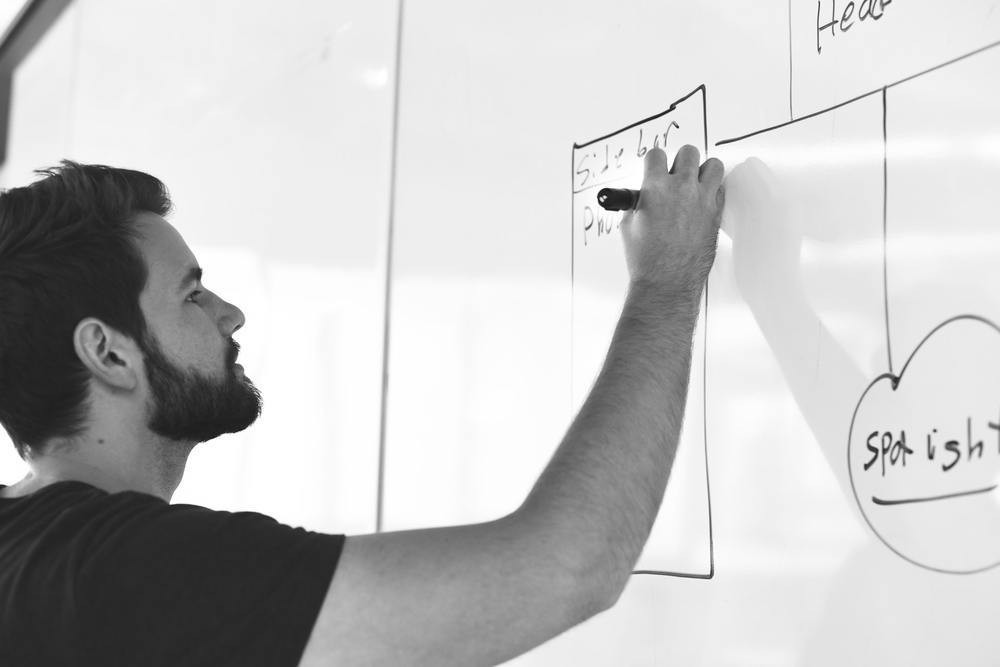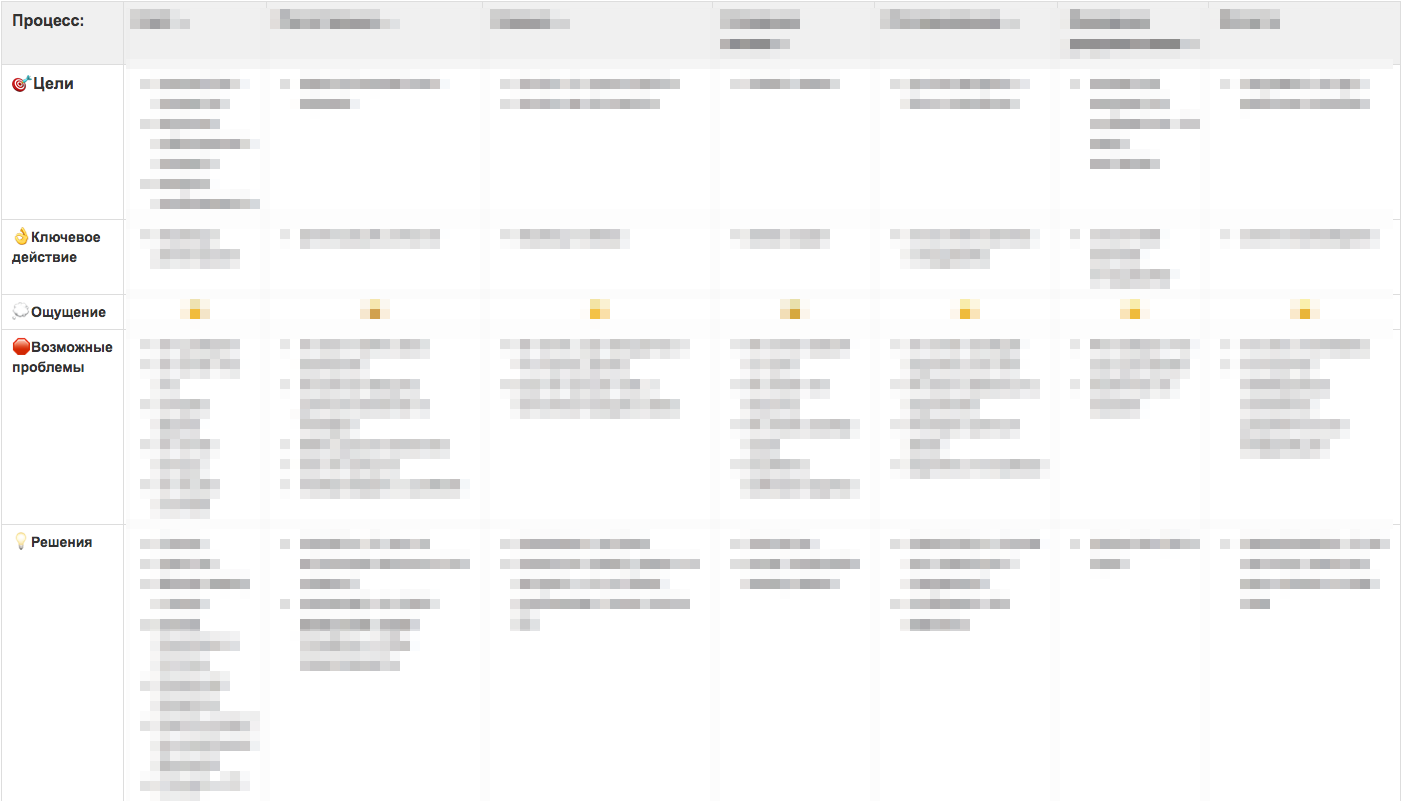Subtleties of product design

A grocery designer is not exactly a designer. He may not open the graphic editor for weeks and not produce a single layout for the month. Because the main purpose of his work in another.
Over the past year and a half I have been working on two products. With the first one (BINO CX) I went from zero to 1 million rubles in revenue in less than a year, and the second is developing at the moment.
')
I know that many designers want to go into the product because of the higher payment, measured rhythm and the ability to directly influence the business. Therefore, I decided to write this article, in which I took into account the personal experience and knowledge gained from the leading product designers of our country.
Not creative enlightenment
Designers do not like to be asked to draw something, because half of their work takes place outside the graphic editor.
Designers do research, design solutions, think through scenarios, while management continues to consider them creators.
Not fair? By no means.
If the management considers the designer a creator, then the designer does not correctly present himself and his work.
To increase their importance in the company, the designer is required to show an understanding of business problems and gain confidence in competent design decisions.
At the beginning of my career, I did not understand this, so my every idea looked like creative enlightenment (in part it was so). A few years later, I realized my mistake and now I put my efforts only into those things that need improvement and are capable of positively affecting the business performance.
You can tell management that the visual language of the service is outdated, but this argument fades and pales in the background of the tasks on which the company's profits directly depend.
Food designers also steal
It is very useful to refer to the experience of similar services, even if you are creating a new product. These can be direct competitors or services with similar mechanics.
Listening to the ux-design course from AIC, it became obvious to me that studying competitors helps not only in finding inspiration, but also in arguing my decisions to the customer / manager. It is worth setting an example of a successful service and the credibility of your idea increases significantly.
Airlines can analyze movie ticket service interfaces. Football club sites can appeal to the experience of media services. And anyone can look at the social network.
Creating services for large banks, I analyzed the game mechanics of applications for learning English. I wrote interesting ideas into a separate file and divided them into categories. The best used.
Competitor analysis is not copying, but using industry experience. And very stupid to ignore it. But despite this, before introducing a new function, you need to think carefully.
“So does Google!” - not an argument.
“So does Google, because it solves a similar problem in this way” is another matter.
Main friends
Developers are the main friends of designers (and their most important tool).
The goal of the product designer is to create a successful product. And this can not be achieved alone, without understanding the logic of the work of their colleagues. It is not necessary to attend programming courses. Simply ask for clarification in situations where there is a conflict between departments.
Sometimes the designer should make concessions if the implementation of the proposed idea requires an inadequate amount of time (in relation to the potential benefit). On the other hand, in important points you must defend your decisions and control their implementation.
This is not a manifestation of disrespect for colleagues. This shows your respect for the product being created.
What are they talking about
After reading Kahneman and Taleb, I became more careful about any type of statistics.
Once a marketer flew into our office to share a discovery. He learned that people work “differently,” so we will have to recycle the product. The marketer cited a topical example, his statement seemed logical and the founder was ready to agree with this, but would make a big mistake.
Adding any functionality, based on real-life examples, find out what percentage of your potential users will use it. Perhaps you will shovel the product for 1% of users who do not bring anything to business.
Yes, this is more analytics than design, but this does not mean that a product designer should not know this.
Read "Think slowly ... decide quickly." This book has greatly influenced my perception of research and helps to avoid typical errors.
Noise filter
One day, one of the investors insisted on a specific decision. I was ready to agree with him, but only if the support staff confirmed this fact. After talking with them, it turned out that the world has changed and customers now behave differently.
Founders / investors have prestige, but do not always have deep expertise, as employees who work daily “in the field”. That is why, while working on the previous project, I regularly spoke with support and was interested in user questions.
This practice helps to identify places where users have difficulty. And if these places are critical, give them enough attention.
Somewhere there will be enough text help, and in some cases you will have to change the interface.
Flexible framework
A framework is a basic structure around which interface elements are built.
The more flexible your framework, the better.
Every product develops: it gets new features and gets rid of obsolete ones. Therefore, it is convenient to have a flexible structure, since with each change you will not have to redo the interface.
To create a flexible framework, you need to understand the possible options for the development of the service, what the “Knowledge Base” will help you with (below). By analyzing potential changes, you can make strategically correct design decisions.
Knowledge base
I did not think about this in the first years of work, but lately I have become increasingly aware of the importance of maintaining a knowledge base. Besides the fact that colleagues can use the collected information, recording helps to remember and understand the information better.
There are several types of materials in my knowledge base:
Competitor analysis . This file contains all services with similar mechanics and interesting features found during the research.
Scripts . Each service has several scenarios and the designer must know them and remember well.
Customer Journey Map . A great tool to help analyze scenarios for potential problems. CJM main scripts I do in the table:

A lot of confidential information :)
Interfaces Here I collect thoughts and ideas about key service locations.
Ideas . General thoughts on the future development of the product.
Who are they?
I occasionally find myself in the studio AIC, where I came across two interesting cases. Once, near the designer’s monitor, I saw a photo of Vladimir Mashkov, in the other - Sergey Garmash. Guess why?
Both actors were the faces of the studio’s clients — VTB banks and Pochta Bank. Marketing specifically selected the actors for the target audience, so the designers hung their portraits in a prominent place.
Knowing users means understanding their motives, desires, habits, life schedule, devices used, average income, marital status, ...
The interface is designed for these people, not for you. Therefore, its users need to know.
Vision
A product designer from the very beginning has a vision of a projected service. I thought for a long time where the vision comes from and focused on the following:
Vision is a synthesis of experience and acquired knowledge.
The vision of the future product will allow to reject some ideas in favor of those that correspond to this vision. As a result, the product being developed reflects the vision of its creators, as was the case with Steve Jobs and Johnny Ive, who created the Apple philosophy.
How to get the “right” vision is difficult to say. A good idea is to be inspired by someone else: reading the books of great innovators and studying successful products. For a start, this may be quite enough, and then everything will depend on your ability to analyze the experience and make informed decisions based on it.
Experience is the key thing not only in logic, but also in creativity. Therefore, recruit it daily, comprehend the knowledge gained and do not stop.
Patience is the key to everything.
Source: https://habr.com/ru/post/420009/
All Articles